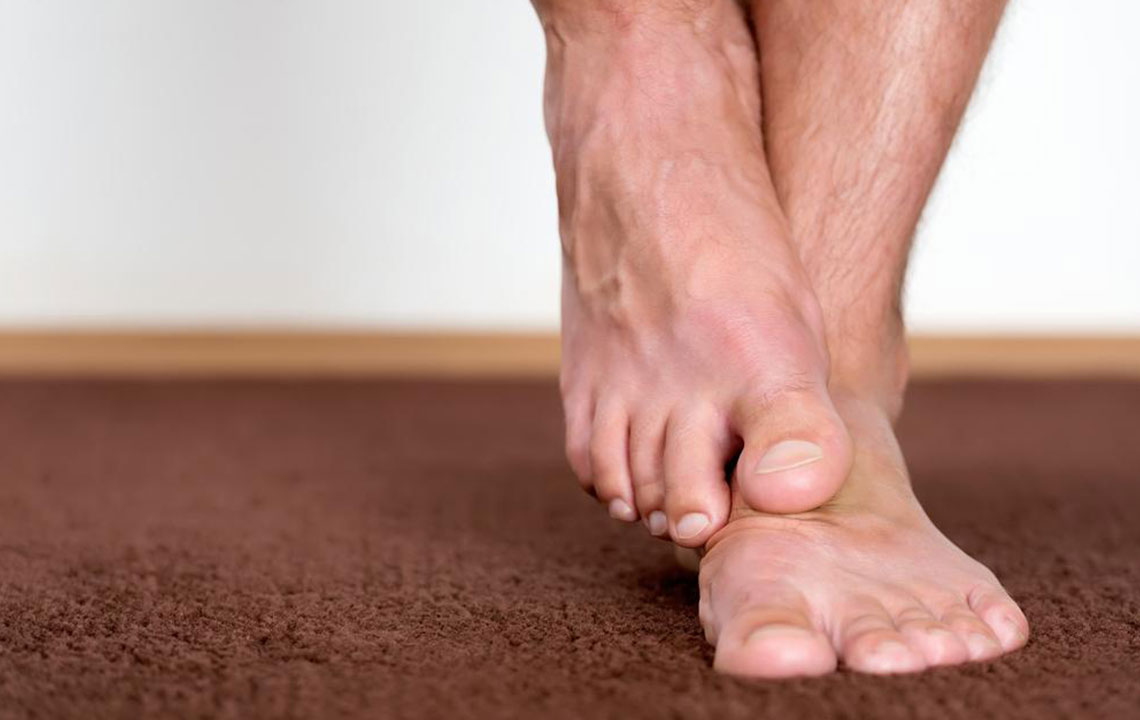How Diabetes Causes Foot Problems
Diabetes is a medical condition associated with the lack of insulin which is a hormone released by the pancreas. Insulin helps convert glucose from food into energy. Due to the lack of insulin, glucose stays in the blood; high glucose levels can cause health problems. A diabetic person can develop various health issues such as heart diseases, eye problems, and nerves damage. A common health problem that is faced by diabetic people is diabetic foot pain.
Your blood vessels get damaged due to the lack of insulin. Diabetes also results in damage to peripheral nerves that can cause diabetic foot pain.

Here, we’ll look at diabetic foot pain in detail. Diabetes can cause foot pain in two major ways. Firstly, it reduces blood flow, thereby leading to the lack of flow of oxygen and nutrients to the leg. Due to this, you become prone to cuts and damages on the feet. Secondly, there is a diabetic nerve called peripheral neuropathy that causes numbness in your feet and increases the chances of soreness and infections.
Problems associated with diabetic foot pain
- Fungal infection in nails : Fungal infection in nails is caused by bacteria, and this causes irritation and redness. The infection also leads to a change of color (yellow) of the nails along with inflammation and pain. When left untreated, the fungus becomes worse and infects your other toenails, the skin on your feet, and even your fingernails. In severe cases, the infection can impair your ability to walk or cause painful ingrown toenails.
- Muscle and joint problems : Diabetes also results in damage to peripheral nerves, leading to foot problems. The damage to the nerves causes muscle and joint pain in a degree that you feel it even at the slightest touch in that area. It can also result in numbness which causes a loss of feeling in your foot. This can cause a loss of balance while walking; this is not healthy for a person in the long run.
- Calluses and corns : Calluses and corns are formations of hard skin under the foot or between the toes. These form due to uneven distribution of weight on the feet or pressure from shoes that rub against toes, causing friction between the toes. Calluses and corns result in abnormal alignment of the foot. But, with proper care, they can be cured.
- Bunions : Bunions is nothing but angling of the big toe towards the small toe due to the formation of the big knuckle on the big toe. Bunions can develop on both the feet. Also, the area where the big toe joins the rest of the foot becomes red and irritated. However, there are devices used to separate the big toe from the rest of the foot. In severe cases, surgery is required to cure bunions.
- Dry skin : Dry skin is another problem associated with diabetic foot pain. This is the case of cracked skin on the foot which makes it easy for germs to enter, thereby leading to damage to the foot. In many cases, the heel area of the foot is highly affected due to dry skin. It can be resolved by moisturizing your feet.
Prevention measures for diabetic foot pain
- The first and foremost measure is checking your feet every day. This will help cure the problem before it worsens. If there’s anything abnormal in the feet, it can immediately be checked to prevent further damage.
- Washing your feet every day is one of the easiest preventive measures. Washing feet with warm water kills bacteria and germs. Apply powder afterward to keep the skin dry, thereby preventing infections.
- Smoothing corns and calluses gently is important to prevent diabetic foot pain. In such cases, the use of pumice stone is encouraged. Rubbing the stone gently in one direction can help cure corns and calluses.
- Wearing shoes and socks at all times is necessary. It is the simplest way to prevent diabetic foot pain. This prevents germs and bacteria from entering your feet. Also, finding the right type of shoes (take care of the material and size of the shoe and size) will prevent various other foot problems.
- Ensuring normal blood flow to your feet is as important as everything else as the major cause of diabetic foot pain is the lack of blood flow to the feet. This can easily be done by keeping yourself active and wiggling toes for a few minutes in the day.
- There are the measures to cure diabetic foot pain through proper care and regular checks. If in case it gets worse due to high levels of diabetes, you should consult the doctor immediately. Remember, diabetes is a silent killer.

